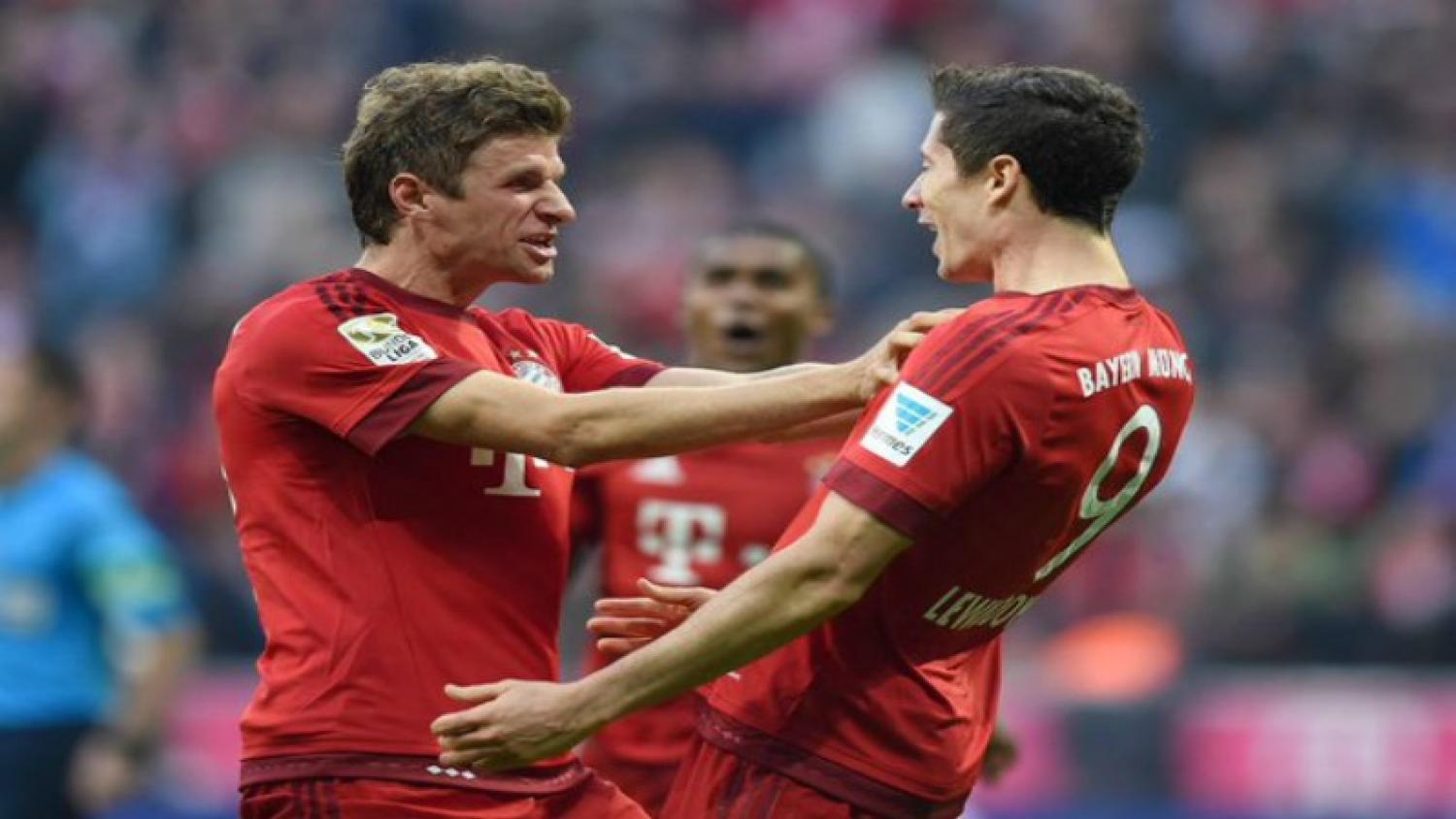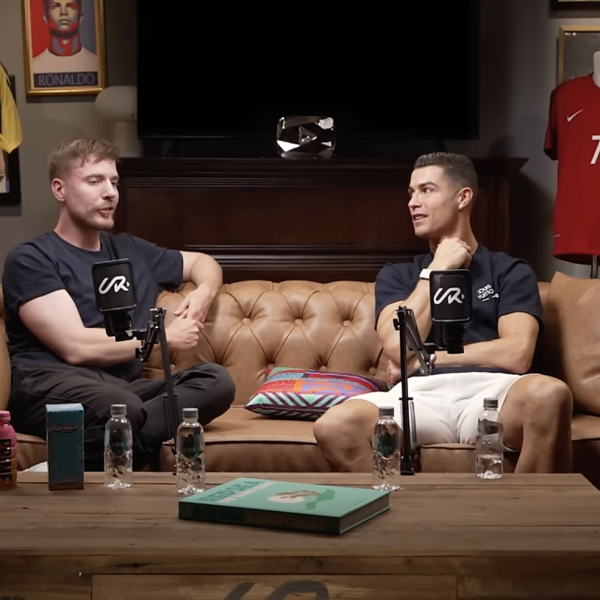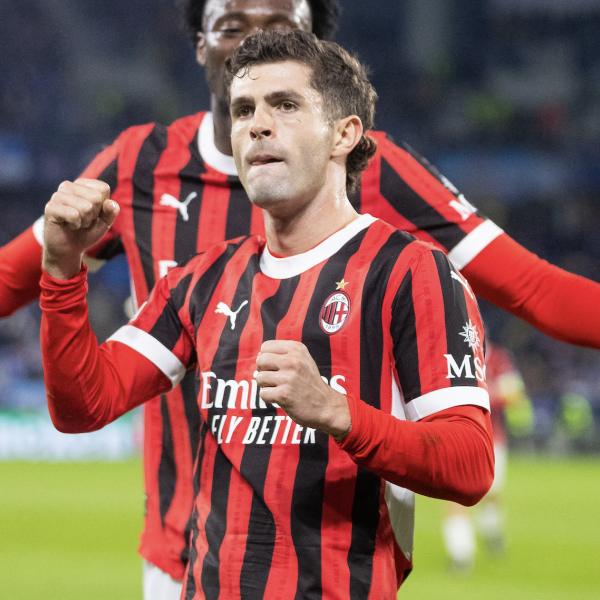With the closing of the 2015 summer transfer window, many European clubs found themselves heading into the season with a worrying lack of options at the striker position. It wasn't for lack of trying, it simply seemed as though world-class European strikers were at a bare minimum.
The classic, predatory center-forward, capable of providing a steady influx of goals in the box while constantly menacing the opposition's center backs, seems to have neared extinction.
Manchester United provided an immaculate example of their rarity by spending €80 million on AS Monaco’s Anthony Martial, completely unproven at the highest level. Arsenal manager Arséne Wenger came under intense scrutiny for his failure, once again, to sign a world-class center-forward.
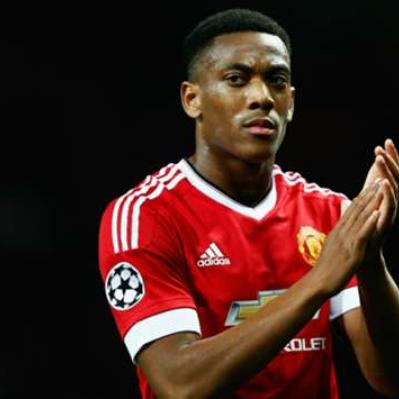
Photo: @GOAL_ID | Twitter
In recent times, clubs have scrambled throughout the transfer window to build attacking depth at the forward position. Searching high and low, rummaging through the cushions for the remote which could guarantee a prosperous future (Luis Suarez), only to accumulate a wealth of derelict skittles and deadbeat batteries (Roberto Saldado and Mario Balotelli).
Is this due to a lack of high caliber forward options, inflated market prices or a sign of a tactical shift in soccer itself?
Wenger revealed that this had been a topic of discussion at a recent UEFA club coaches forum, displaying the significance of the issue at hand. Wenger declared that “strikers are South American today. Europe doesn’t produce strikers any more.”
A third of the way through the European club season and Wenger’s opinions have been vindicated. An analysis of the top ten scorers in each of Europe’s big four leagues (the Premier League, La Liga, Bundesliga and Serie A) reveals some startling facts:
1. Of the 40 players analyzed, 14 are not European (35%).
2. Of the remaining 26 players, 10 are not true forwards (25%).
3. Of the now remaining 16 players, 9 are over the age of 28 (22%).
4. That leaves just 7 out of a possible 40 candidates as being under the age of 28, European and playing the classic center-forward position (17%).
Those seven players are Robert Lewandowski (Bayern Munich), Romelu Lukaku (Everton), Harry Kane (Tottenham), Bas Dost (Wolfsburg), Nikola Kalinic (Fiorentina), Borja Gonzalez (Eibar) and Anthony Modeste (FC Koln).
The reluctance of clubs to splash the cash in the face of such an underwhelming core of high-class center-forwards is clearly evident.
It also shows why Bayern were willing to pay nearly €40 million for Lewandowski, Everton shattered a club record by shelling out €40 million (or £28 million) for Lukaku and Tottenham recently signed Kane to a five-and-a-half-year deal in the face of mounting interest from other clubs.
What accounts for this shift in European soccer? Where have all of Europe's world-class strikers gone? Based on the statistics available, here are three possible reasons which account for the downfall of European strikers.
Reason #1: South America Produces Better Forwards

Photo: @SkyFootball | Twitter
A look at the top scorers across Europe reveals a heavy South American influence. While some of these players may not represent true center-forwards, they still account for a large percentage of the goals being scored in Europe's big leagues.
Top South American Goal Scorers In Europe (2015-16)
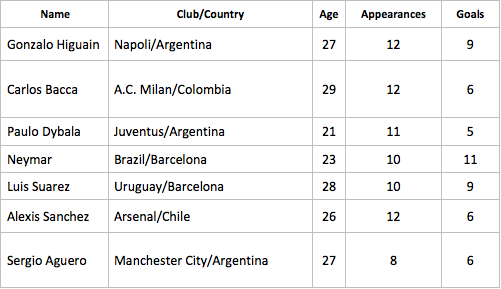
Factor in the early season dominance of Borussia Dortmund’s Pierre-Emerick Aubameyang (Gabon) and Watford’s Odion Ighalo (Nigeria), and it’s obvious to see that European clubs are looking far beyond their own backyards to find goals.
Wenger accounted for this transition by hypothesizing that “before, you played in the park where you had to kick the ball up front and you had to fight. A boy of 12 who played against a boy of 16 had to be shrewd and push to get the ball. All of those kind of things have gone.”
Essentially, Wenger is saying that the fighting spirit has left European center-forward play.
While players like Suarez, Bacca and Sanchez consistently display a fighting spirit embedded at the School of Hard Knocks - older players kicking lumps out of them while they toiled on a field of debris and strange bounces - their European counterparts are developing their technical abilities in the posh confines of state of the art academies.
Overly pampered and quickly losing motivation to push their game forward, these players struggle in the face of adversity. Basically, it's the same critique Roy Keane leveled at Arsenal's young stars. This is the selfie generation, only able to subsist off instant gratification.
The days of Alan Shearer, Christian Vieri and Mario Gomez seem consigned to soccer lore. The tough as nails, working class enigma that is Wayne Rooney looks set to join them soon.
Wenger lamented that “one of the biggest problems in the education at the academies is that you get them to the age of 19 and then what can you offer them? We lose many players because they stand there with nowhere to go. At that age, when you have no plan, you die.”
This reasoning brings us directly to our next point. While top-scoring European forwards under the age of 28 are difficult to find, there’s a resurgence of older forwards who are just now making their mark.
Reason #2: The Delayed Development Of Traditional Center-Forwards

Photo: @BBCSport | Twitter
While midfielders tend arrive on the scene exceptionally early – their touch, composure and ball skills evident for all to see – young forwards don’t typically tend to be given as many chances or as much leniency.
Put simply, forwards are judged on goals. The younger you are, the more difficult the task is at the highest level. You’re playing against experienced defenders, you’re still developing physically and if you can’t put the ball in the back of the net, you’ll find yourself on the bench.
The forward position is ultimately the most cut-throat spot in all of soccer.
With forwards from around the world lining up to take your spot, it’s interesting to see the amount of “late blooming” forwards across Europe.
In England, Jamie Vardy has experienced an astronomical rise from the bottom of the English football league system to becoming top scorer in the Premier League. At 28, Vardy has taken a very atypical path to the top.
Likewise Southampton’s Graziano Pelle. The Italian has spent time at 9 different clubs throughout his career, including time in Serie B, but has now scored six goals in twelve appearances for the Saints.
In Spain, Aritz Aduriz, 34, and Javi Guerra, 33, are experiencing similar renaissances. Guerra spent time in both the Segunda and Tercera Divisions of Spain but has now scored 8 goals in 9 appearances for Rayo Vallecano.
Over in Italy, Eder and Fabio Quagliarella, having spent extensive time in Serie B and C respectively, are making the most of their opportunities this year.
The six players are all undoubtedly talented but are just recently being recognized as such. Having had to spend a large part of their careers proving themselves in the lower divisions, they are all a testament to both how difficult it is as a young center-forward in Europe as well as how much graft you have to put in to finally get your chance.
Unfortunately for many center-forwards, these chances are coming fewer and farther between with a natural shift away from the traditional striker position itself.
Reason #3: Old-Fashioned Center-Forward Play Has Been Jettisoned For More Mobile Attackers
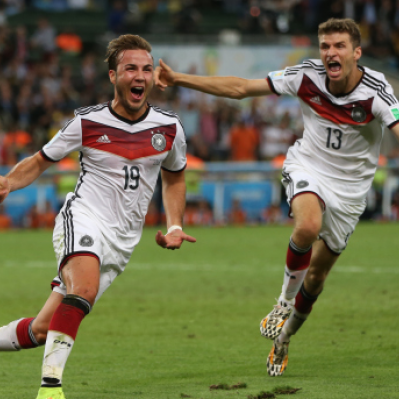
Photo: @BrunoAhoyo | Twitter
When Spain won the World Cup in 2010, they did so by implementing Cesc Fabregas in the false 9 position. By playing closer to the midfield and in the space in front of the center backs, a false 9 makes traditional center-forward play obsolete. Germany also utilized this strategy to great effect with Mario Gotze at the 2014 World Cup.
Tactically, the game used to be dominated by formations featuring two center-forwards. There’s certainly been a shift away from this set up, some managers now loathe to play even one. The old lumbering striker who did little other than stick the ball in the back of the net has been sacrificed for a more utilitarian and adaptable forward.
Here are the non-traditional attackers who are lighting up Europe right now.
Non-Traditional Attackers: Replacing The Traditional Striker?
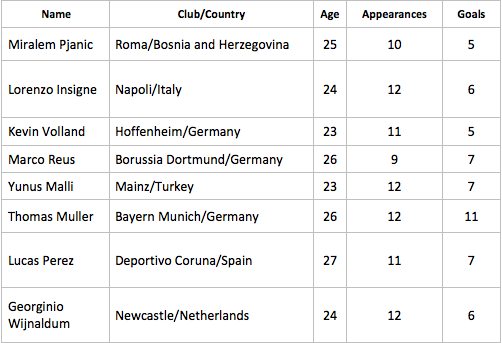
Whether these players feature as attacking midfielders, wingers or false strikers, all represent a growing acceptance to play without a traditional striker in the face of creating mobile, possession and pressing based sides wherein every single player needs to cover ground and work for the team.
The answer to where European strikers have gone likely lies somewhere within all three of the reasons.
The shifitng tactical nuances of soccer, the demands of top-level European football, intensified by its place as the ultimate destination for the world's elite players, and the dog-eat-dog nature of the center-forward position make it extremely difficult for young European strikers to find consistent success.
All goal and appearance data via whoscored.com

 Home
Home